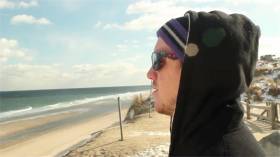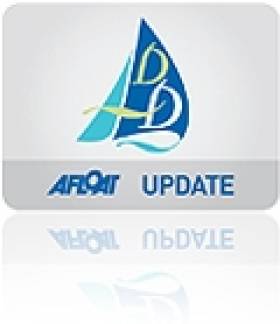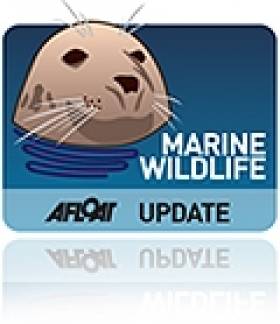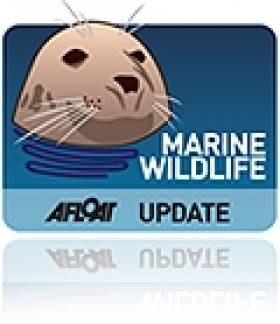Displaying items by tag: Dingle
World Premiere For Surfing Documentary In Dingle Next Weekend
#Surfing - A new documentary following two American descendants of the 'King of the Blaskets' as they surf the waves of their ancestral homeland will have its world premiere in Dingle next weekend.
The Crest will be screened as part of an eclectic programme at the Dingle International Film Festival at 6pm on Saturday 19 March at the Blasket Centre (Ionad an Bhlascaoid Mhóir), and again on Sunday 20 March at 2pm in the Phoenix Cinema.
Directed by Mark Covino, whose last film was the award-winning music documentary A Band Called Death, The Crest follows the exploits of cousins Andrew Jacob and Dennis 'DK' Kane as they trace their shared ancestry back to the Blasket Islands.
A rare stronghold of traditional Irish culture over the centuries, the rocky island chain is where their great great grandfather once presided as 'An Rí' - the king of the islands.
One of his responsibilities to the isolated community was to row the treacherous Atlantic seas to the mainland on the Dingle Peninsula for supplies.
His was a seaworthiness that seems to have carried on through the generations, as both Jacob and Kane are surfing enthusiasts to the professional level.
It's only natural, then, that they would explore their bloodline by putting themselves in their regal ancestor's shoes – or rather waters.
See the trailer for The Crest below:
#MarineNotice - The latest Marine Notice from the Department of Transport, Tourism and Sport (DTTAS) advises that a wave measuring device has been installed on the seabed at Dingle Fishery Harbour Centre.
The wave study is being carried out by the Marine Engineering Division of the Department of Agriculture, Food and the Marine and is expected to be ongoing until early September 2015, weather permitting.
For safety reasons, mariners are requested to keep a sharp lookout and to proceed slowly and with extreme caution in this vicinity. Fishermen are requested to take great care when dredging near the location of the device and keep a wide berth.
A yellow floating marker buoy with a special mark beacon has been installed to indicate the location of the device. A photograph of what the buoy looks like in the water and the co-ordinates of its placement are included in Marine Notice No 29 of 2015, a PDF of which is available to read or download HERE.
Dun Laoghaire to Dingle Yacht Race; Getting Halfway There, But Things Are Ever So Slow
#D2D – When the crew of Anthony O'Leary's Antix began collating weather predictions at mid-week for the approaching Dun Laoghaire to Dingle Race writes W M Nixon, they found themselves in the happy position of being told on Thursday that when the wind expectations were combined with the boat's known performance capabilities, they might be looking at breaking the 24 hours for the dash to Dingle.
Quite. As of 1600 hours this afternoon (Saturday June 13th), we're looking at the dribble to Dingle. The two leaders – Lee Overlay Partners and Antix – are within a couple of miles of each other well seaward off Cork Harbour, and making a less-than-stellar two to four knots while turning slowly to windward in a local sou'westerly.
Antix continues to lead the fleet on handicap while Lee OP is eighth in IRC. But when things get as slow as this, the little guys somewhere astern are making hay just sitting still, so the lead which Antix has held virtually from the start could easily evaporate.
However, this year the boat has had her performance maximized for lighter conditions, so the slightest little bite to the breeze could see her getting ahead of Lee OP and holding on to her overall lead. That said, if the underlying northerly comes in again after the day's sea breeze effect has waned along the Cork coast, the Cookson 50 could be back in business.
Twenty-two miles astern, as of time of writing George Sisk's Farr 42 Wow is next in line, churning merrily along on course in a private breeze at better than 4 knots, while her closest contender, the Power Smiths' J/122 Aurelia, has lost most of her wind after an excellent race until now, and is headed off almost to a southerly course, while barely registering one knot.
Mike Murphy's characterful twin-ruddered JPK 9.60 Alchimiste continues to have a cracker of a race, lying second on IRC after Antix, but like the leader now obliged to turn to windward as the summer sou'wester works its way along the coast.
Colm Buckley and Simon Knowles have been putting in an impressive performance in the two-handed division which they lead by quite a margin with the Elan 340 Blue Eyes, on top of which they're lying eight overall in IRC, and have many larger fully crewed boats well astern of them on the water.

Captains Cool.....Colm Buckley and Simon Knowles with the Elan 340 Blue Eyes knew that it would be a mistake to mix it with the rest of the fleet in the thick of a potentially messy start, so they held back and started with room to spare........Photo: W M Nixon
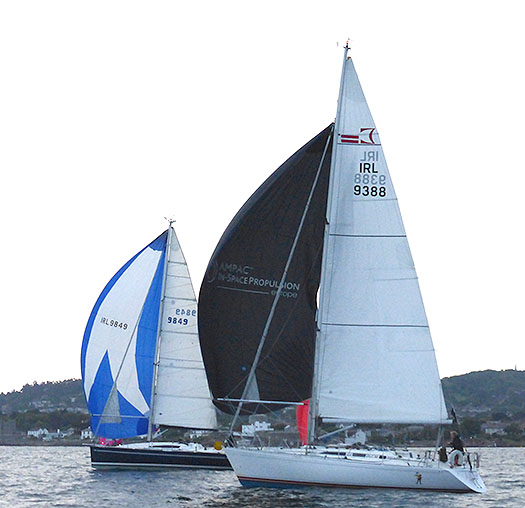
.....but soon Blue Eyes was in perfect trim and going well, and already had closest two-handed rival Joker (David Gibbons) put in place astern. Photo: W M Nixon
They've done well sailing two-handed in the Dingle Race before, and at last night's inevitably messy running start, it was noted that the two guys stayed well out of the crowd to make a very conservative start. Yet they soon had themselves up and running in good order with spinnaker setting perfectly, picking off one boat after another until by the time the fleet was off the Wicklow coast, they were comfortably leading the two-handed division, and were even in the frame in the fully-crewed sector.
Signing off, it's noted that Lee OP and Antix are back on course for the Old Head of Kinsale and making better than four knots, but whether this is a temporary breeze or a return of the overall slack northerly remains to be seen. Either way, we won't be seeing a new course record with D2D 2015. But although tomorrow may seem some local southwest winds, the gradient is not expected to draw properly from the south until Monday afternoon, by which time everyone should be long since finished.
Dun Laoghaire Dingle 2015 Yacht Race Tracker Here!
Video Shows Basking Shark On Patrol Off Dingle
#MarineWildlife - Following Friday's look back at the basking shark that surprised bathers off Cape Clear last summer, Independent.ie brings us this remarkable up-close video of the ocean giants returning to the Kerry coast for the warmer months.
The footage was captured near Dingle by sea kayaker Noel O'Leary, who said: "I’ve seen the odd minke whale, but to see a shark that's bigger than the kayak so close is quite amazing."
But it wasn't the only surprising sight around Ireland's coast as of late, as Her.ie reports on a 'surfing seal' in Dungarvan.
Apparently, the seal has become somewhat of a local celebrity after taking a liking to an abandoned surfboard at the mouth of the Colligan river.
Whether the cuddly sea dog is ready to take on the big waves of Mullaghmore remains to be seen!
Dun Laoghaire to Dingle Race 2015 Launched by the National Yacht Club
#d2d – The National Yacht Club in Dun Laoghaire harbour has announced its 12th staging of the biennial Dingle Skellig Hotel Dun Laoghaire to Dingle Race which will start on Friday 12th June. It follows on a week from Howth Yacht Club's Lambay race so this time round it may be viewed with more interest by several more boats from across Dublin Bay too. The Notice of Race for the 2015 D2D is downloadable below.
For 2015, defending champion in the Dingle Race is Brian O'Sullivan of Tralee with the veteran Oyster 37 Amazing Grace, which came good in the end in 2013 with a new breeze which knocked pending leader Antix (Anthony O'Leary) off the winning perch.
The 2015 Dingle Race also acts as a useful if rather indirect feeder for the ICRA Nationals at the Sovereigns Cup in Kinsale from June 24th to 28th, there could be all sorts of sharp boats lining up to take the prize.
More in Afloat's 2015 sailing season preview by WM Nixon here.
The Notice of Race for the 2015 D2D is downloadable below as a pdf file.
Dingle's Seal Sanctuary Another Victim Of Violent Storms
#MarineWildlife - Baby seals injured in the recent severe weather have been rendered homeless after their sanctuary in Dingle was destroyed in last week's Storm Darwin.
As the Irish Independent reports, the Dingle Wildlife and Seal Sanctuary is dealing with what amounts to a double catastrophe, picking up the pieces of its storm-ravaged facilities while caring for unprecedented numbers of injured marine mammals.
"We have seals coming in who are essentially being thrown off rocks, so they have experienced severe trauma, with broken bones and bruises," said animal operation manager Ally McMillan - who added that among those that have survived, many require surgery, with four already in intensive care.
The Irish Independent has more on the story HERE.
Stranded Seal Rescued By Brothers Returns To Open Water
#MarineWildlife - The baby seal rescued by three brothers on the Dingle Peninsula three months ago has been released back into the sea, according to the Irish Independent.
Back in October, Afloat.ie related the rescue of the stranded seal pup by the O'Sullivan brothers Marwin, Leon and Rory while they were on a family break in Kerry over the October bank holiday weekend.
Named Lena by seven-year-old Rory, the seal was taken into the care of the Dingle Wildlife and Seal Sanctuary, who nursed her back to health after a serious bout of the flu among other ailments.
And now she's back swimming in the Altantic, while some 30 other seals - victims of the recent stormy weather - continue to receive TLC at the sanctuary.
The Irish Independent has more on the story HERE.
Marine Notice: Construction Works At An Daingean Fishery Harbour Centre
#MarineNotice - Marine Notice No 66 of 2013 concerns construction works at An Daingean Fishery Harbour Centre in Co Kerry, which were set to commence on or around last Friday 6 December 2013, weather permitting.
These ongoing works will involve the replacement of old and installation of new pontoons on the marina in the western basin.
The works are being advanced by Inland and Coastal Marina Systems Ltd. A workboat will be used to move the pontoons and a mobile crane will be operating from the shore adjacent to the western slipway.
For safety reasons, mariners are requested to proceed slowly and with caution in the approach to the western basin of the Fishery Harbour Centre and to give the works a wide berth. Wave-wash from vessels should be avoided.
These works are expected to continue until the end of January 2014, weather permitting.
For further information, contact An Daingean Harbourmaster’s Office at 066 915 1629.
Fungie Frolics With Friends Off Dingle In New Video
#MarineWildlife - Ireland's most famous resident dolphin appears to have made some friends, as the video above shows.
TheJournal.ie reports that Fungie, who made Dingle his home 30 years ago after possibly escaping from a British dolphinarium, often shuns the friendship of dolphins from passing pods.
But this time he's made a connection with two dolphins who arrived at the Kerry village this past weekend.
Dutch couple Jeannine Masset and Rudi Schamhart, who have befriended Fungie over the past two decades, say "he gets along brilliantly" with the newcomers, who have been spotted in the area previously.
And the trio have been performing some spectacular acrobatic feats to the delight of onlookers - a good indication that despite his age, and a year on from fears of his demise, Fungie's still a calf at heart.


























